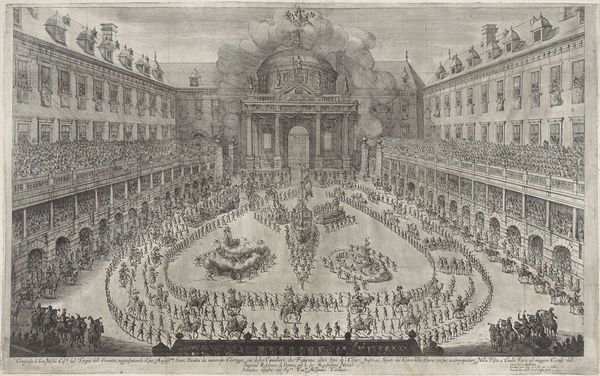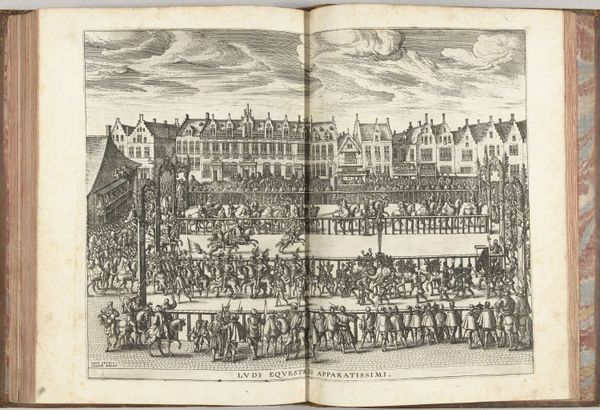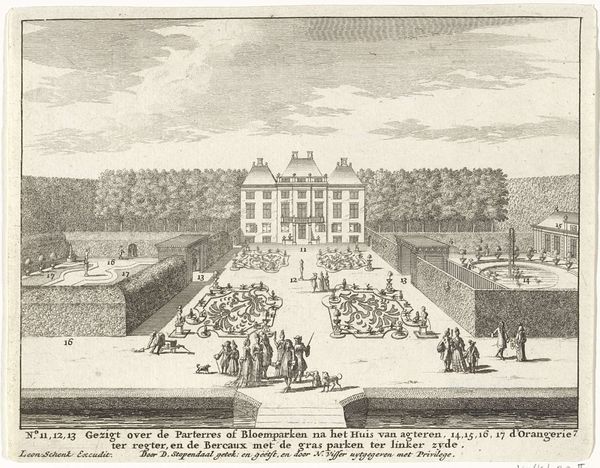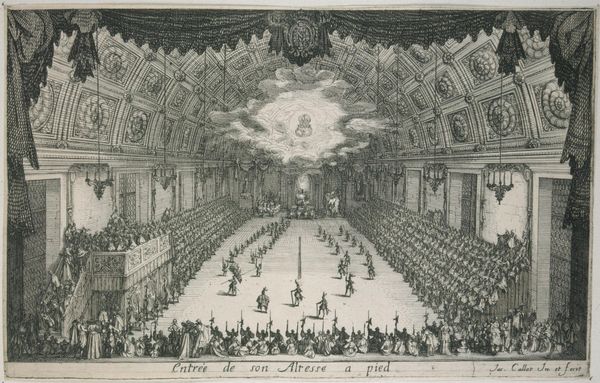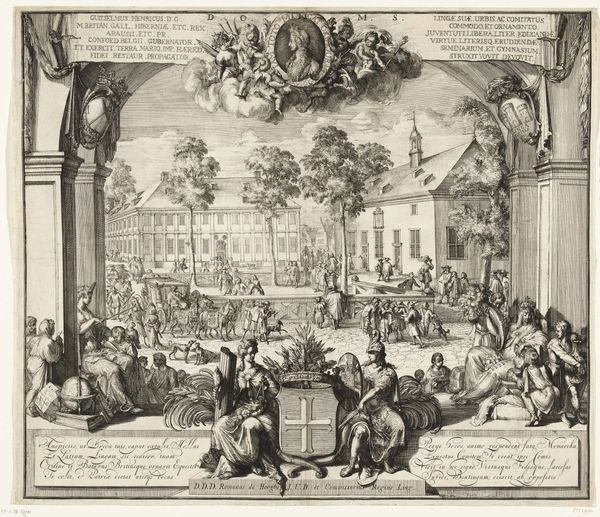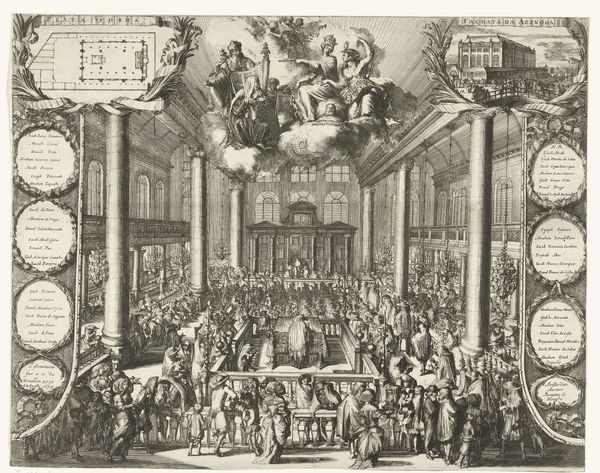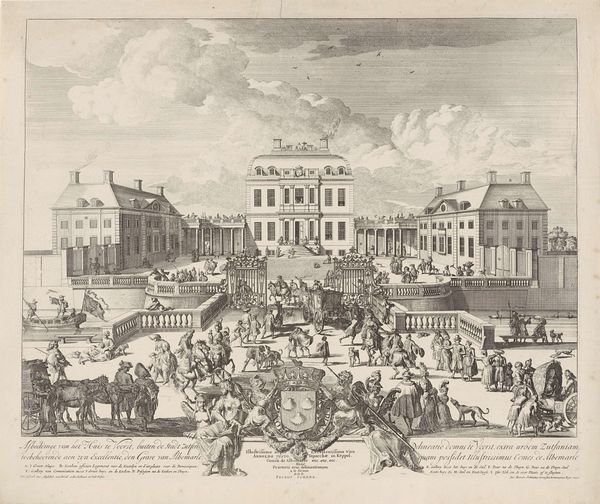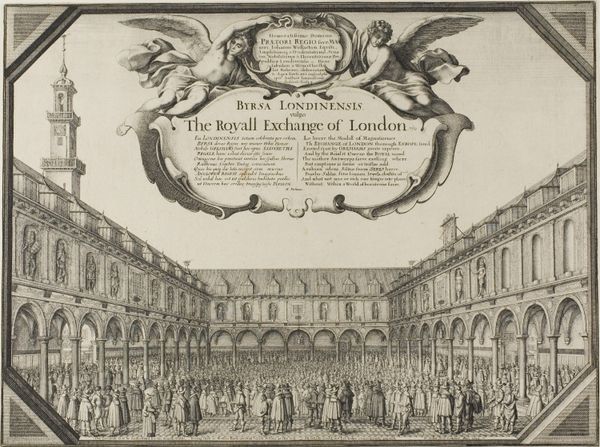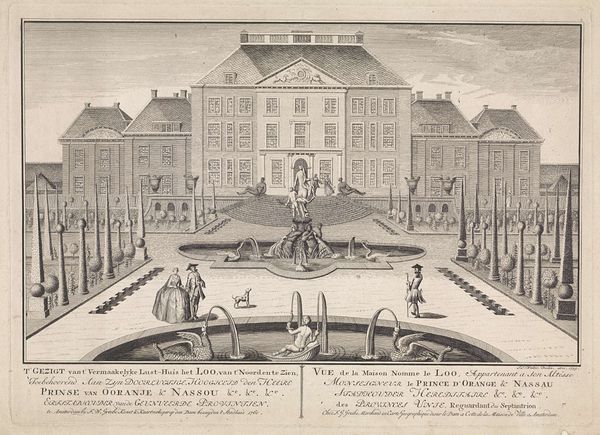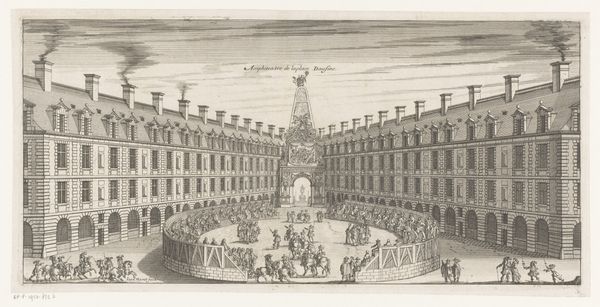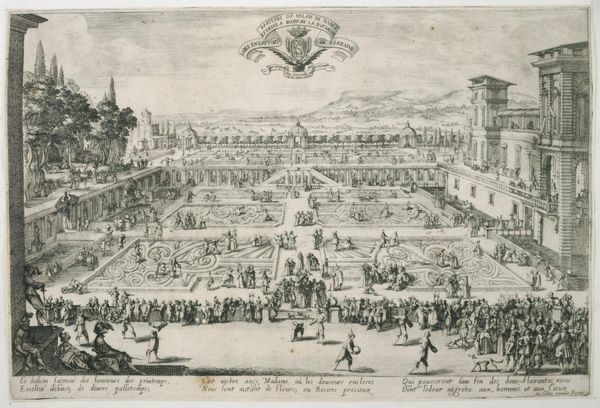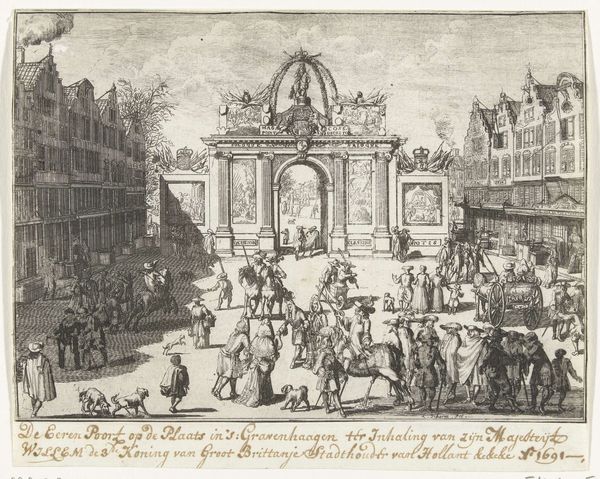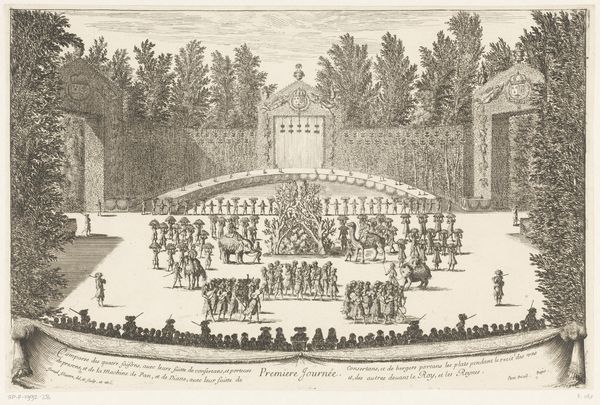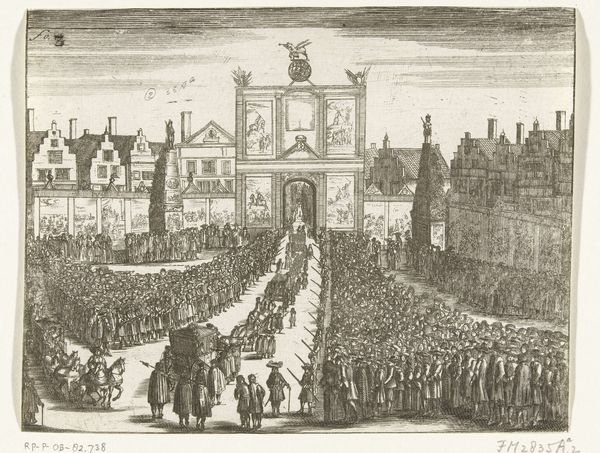
print, etching, engraving, architecture
#
aged paper
#
baroque
# print
#
etching
#
old engraving style
#
hand drawn type
#
landscape
#
classicism
#
cityscape
#
history-painting
#
engraving
#
architecture
#
historical font
Dimensions: height 375 mm, width 585 mm
Copyright: Rijks Museum: Open Domain
Editor: Here we have "Carrousel in de Hofburg te Wenen," an etching made after 1667 by an anonymous artist. The sheer density of detail is astounding. The longer I look at it, the more it feels like a record of labour—all those people represented by meticulously etched lines! What do you see in this print? Curator: I see a carefully constructed performance of power, quite literally etched into being. Note the architectural rendering: the sharp delineation between the imperial box seats and the grounds, illustrating controlled perspectives reflecting consumption practices. This wasn't just a spectacle; it was the meticulous labor of etching and printing—a mechanical reproduction designed for widespread distribution. The making of art in the making of a court! Editor: So, you're saying that the etching itself is an important aspect of the work, not just what it depicts? Curator: Precisely! Think about the copperplate, the ink, the press, and the hands that operated them. The material process gives us direct insight into 17th-century print production and, more significantly, into the controlled dissemination of the Habsburgs' image. This highly detailed and skilled labor mirrors the labor being celebrated—or rather, controlled—within the courtyard. Does this piece invite consideration on class divisions to you? Editor: Yes, absolutely. Seeing it as a product of labor itself highlights the difference between those in the stands and those performing. Curator: Exactly. The artist's labour, and all who are represented—everyone involved in the carrousel itself—all of it goes into constructing and reinforcing these social hierarchies through the print's physical manifestation. Editor: That’s a perspective I hadn't considered. I was so focused on the image that I missed the significance of the material process and the means of production entirely! Curator: Considering those elements allows us to explore far beyond just aesthetics, examining its deep-seated purpose in manufacturing and marketing aristocratic society.
Comments
No comments
Be the first to comment and join the conversation on the ultimate creative platform.
